Breast Implant Malposition literally means the Breast Implant is in a bad position. In most cases, Breast Implant Malposition is an acquired problem, that gradually occurs over time. Breast Implant Malposition is classified by the direction of malposition. Breast Implants can be too high, too low, too medial (close together) or too lateral (far apart).
The common causes and treatments for correcting Breast Implant Malposition are discussed below. It is important to note, that most Breast Implant Malpositions are treatable. However, some are more prone to recurence than others. Both surgical and non-surgical options are discussed, but no treatment should be started without consulting a qualified doctor. A Board Certified Plastic Surgeon, like Dr. Joseph A. Mele, MD, FACS, will obtain your medical history, and perform a physical examination before formulating a treatment plan. Moreover, you should have a thorough understanding of the expected benefits and limitations of the treatment so that you achieve the best outcome possible.
Breast Implant Revision Before and After Photos
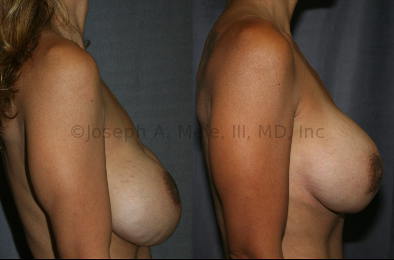
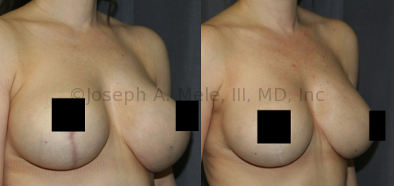
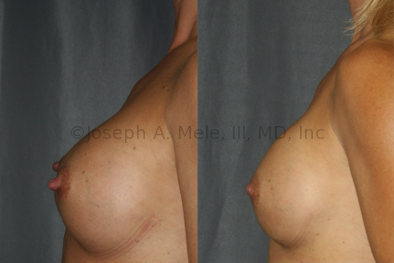
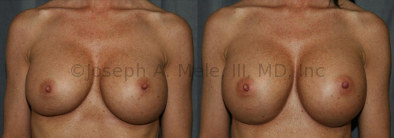
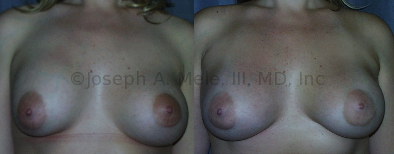
.jpg)


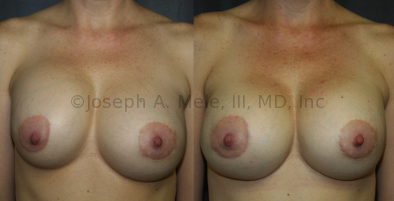
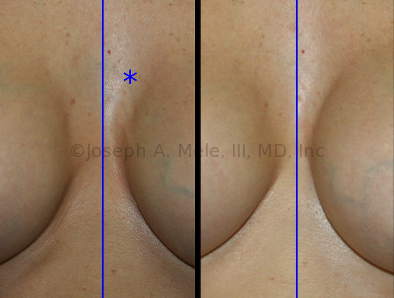
.jpg)
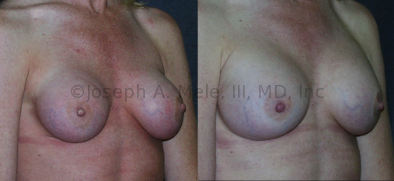
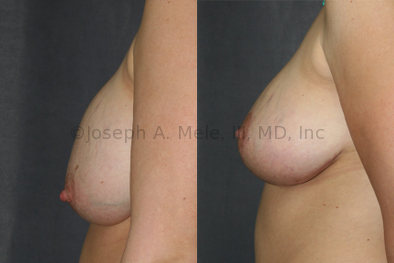
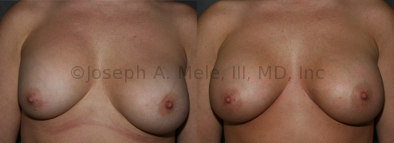
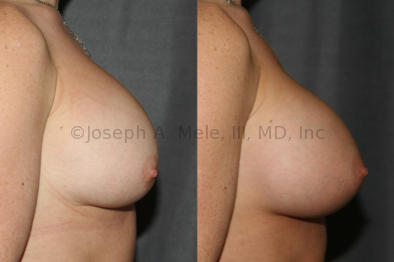
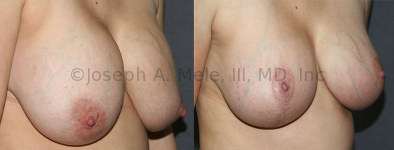
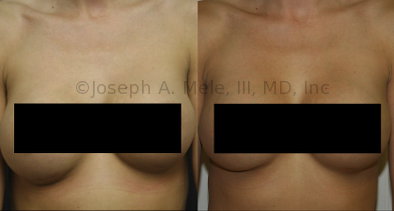
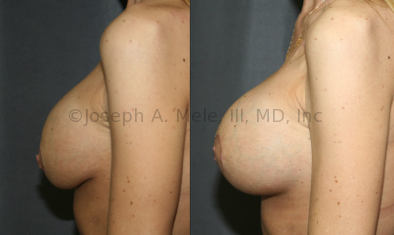
.jpg)
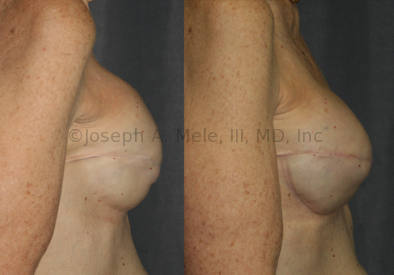
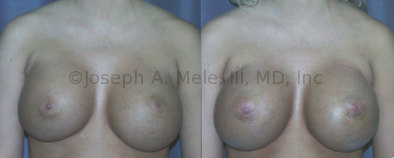
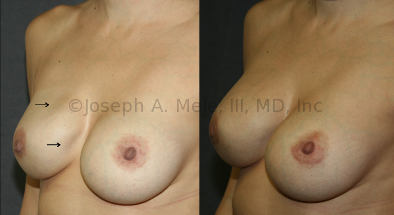
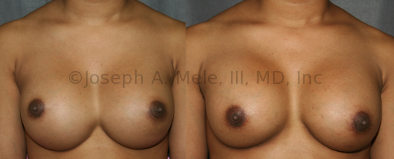
.jpg)
.jpg)
.jpg)
.jpg)
.jpg)
.jpg)
.jpg)
.jpg)
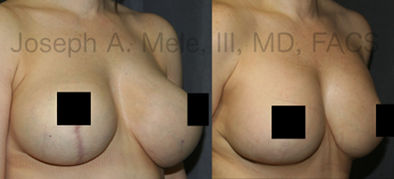
.jpg)
.jpg)
.jpg)
.jpg)
Breast Implant Revision Surgery for Breast Implant Malposition
Malposition, as the name implies, means the breast implants are in the wrong place. Since breasts come in many shapes, sizes and locations, it is not possible to always have “perfectly” positioned breasts. When the location strays too from for the ideal position, revision surgery may be necessary. It is normal for the breast to appear too high in the early post-operative period. During the first year after surgery, breast implants normally settle lower on the chest. Intervening too early will not only get you an extra surgery, but it may result in implants that then continue to drop to a lower than ideal position. If you are more than a year out, and the implants are in a less than ideal position, you may want to consider surgery to reposition your implants. At a year the implants are stable, and correction is more predictable.
Breast Implant Malposition – Implants Too High
The most common breast implant malposition is too high. Fortunately, this is also the breast implant malposition that is the easiest to correct. High malposition can be caused by creating a breast pocket which is too high on the chest, or it can be from a pocket that is formed correctly, but the breast implant has settled too high in the pocket.
Over supporting the breast implants in the early post operative period can contribute to high malposition. Underwire bras are not recommended in the early post-operative period for this reason. Underwire bras push the implants up and compress the lower pocket closed. If the lower aspect of the pocket closes with the implant high, the implant will become stuck high in the pocket, resulting in high malposition.
For implants placed under the muscle, a tight muscle, or prolonged muscle spasm after surgery, can also lead to breast implant malposition. The tight muscle or prolonged muscle spasm will hold the breast implant high up in the pocket. If the lower aspect of the pocket closes before the implant drops back down, high malposition can result.
Capsular contracture is another cause of high malposition. Capsular contracture can cause malposition months to years after the original breast augmentation surgery. A capsule that tightens at the bottom of the pocket will push the implant up, and support it higher than a soft capsule, causing high breast implant malposition.
Treatment of high malposition shortly after surgery may include:
- Massage to displace the implants down and stretch the lower pocket.
- Wearing a bra without underwire or with your plastic surgeons guidance, going braless.
- Use of a breast band worn over the top of the implants to push them down.
- Avoidance of overhead reaching and heavy lifting to allow the muscles to relax.
Treatment of high malposition that has persisted more than a year may include all the above and:
- Breast augmentation revision surgery to release the lower capsule and enlarge the lower aspect of the breast implant pocket.
Breast Implant Malposition – Implants Too Lateral
The second most common malposition is too lateral. With lateral malposition, the implants move away from each other, and may start heading under the arms. Lateral malposition can be from formation of a breast pocket which is too lateral, or it can be from a pocket that was formed correctly, but the implant pushes it way laterally. This can occur because there are no firm attachments in the lateral breast to keep the implants towards the middle. The shape of the underlying rib cage contributes also. Ribs curve around from the front to the back. The flatter the ribs are behind the implants, the better support the ribs give. If the ribs begin curving towards the back while they are still under the implant, the implant will tend to fall towards the armpit. Sleeping on your stomach after surgery also tends to push the implants to the sides. Once the medial (central) pocket closes, the implant will not move back to the middle, and the gap between the breasts will widen. Capsular contracture can also cause lateral malposition well after the original breast augmentation surgery.
Treatment of lateral malposition shortly after surgery may include:
- Massage to push the implants together and stretch the inner pocket.
- Wearing a bra that holds the implants towards the middle, with your plastic surgeons guidance sometimes this means bras with underwire.
- Use of a breast band worn over the top and sides of the implants to push them together.
- Avoidance stomach sleeping.
Treatment of lateral malposition that is not responsive to the above:
- Breast augmentation revision surgery to release the inner capsule and enlarge the medial (inner) aspect of the breast implant pocket.
- Capsulorrhaphy to close the lateral aspect of the pocket.
Breast Implant Malposition – Implants Too Low (Bottoming Out, Double Bubble)
Another type of malposition occurs when the implants are too low. Inferior malposition may present as bottoming out or as a double bubble. Inferior malposition can be from formation of a breast pocket which is too low, or it can be from a pocket that was formed correctly, but the implant pushes it way down. This can occur because there are no firm attachments to enforce the inframammary fold (IMF), or because the attachments have been released too much to support the weight of the breast implant. Larger implants are at greater risk of inferior malposition.
Treatment of inferior malposition shortly after surgery may include:
- Wearing a supportive bra, with your plastic surgeons guidance sometimes this means an underwire bra that holds the implants above the ideal IMF.
- Taping of the skin underneath the breast.
Treatment of inferior malposition that is not responsive to the above:
- Breast augmentation revision surgery to repair the attachments at the IMF, and capsulorrhaphy to close the lower aspect of the breast implant pocket.
- For the correction of a double bubble deformity, sometimes it is necessary to move the implant from the subpectoral pocket (behind the muscle) to a subglandular pocket (in front of the muscle)
- ADM’s (Acellular Dermal Matrix) can be used to create a sling to internally support the breast implant.
- Downsizing – Sometimes smaller breast implants are needed to maintain the ideal position and decrease the risk of recurrent inferior malposition.
Breast Implant Malposition – Implants Too Medial (Symmastia)
The rarest, and at times the most difficult malposition, occurs when the implants are too close together. In its most severe form, the two breast can become one. This is termed symmastia in the plastic surgery literature and uni-boob or bread-loafing in the lay press. Symmastia can cause the skin between the breasts to lift. This gives the appearance of one large breast. Like the other malpositions, symmastia can result from the formation of a breast pockets which is are too close together (or even meet in the middle), or it can be from pockets that were formed correctly, but the implant pushes it way medially. The shape of the ribs can contribute, such as in cases of pectus excavatum. Breast implant selection also can contribute to the formation of symmastia, The bigger the breast implant and the higher the breast implant profile the easier it is for the implant to lift the central chest’s skin and form symmastia.
Treatment of medial malposition (symmastia) shortly after surgery may include:
- Avoiding breast compression.
- Thong bra
Treatment of medial malposition (symmastia) that is not responsive to the above:
- Breast augmentation revision surgery to repair the attachments at the edge of the sternum. Sometimes the capsule is sufficient for repair, sometimes a neosubpectoral pocket is formed, sometimes ADM’s are needed.
- Downsizing – Sometimes smaller breast implants are needed to maintain the ideal position and decrease the risk of recurrent symmastia.